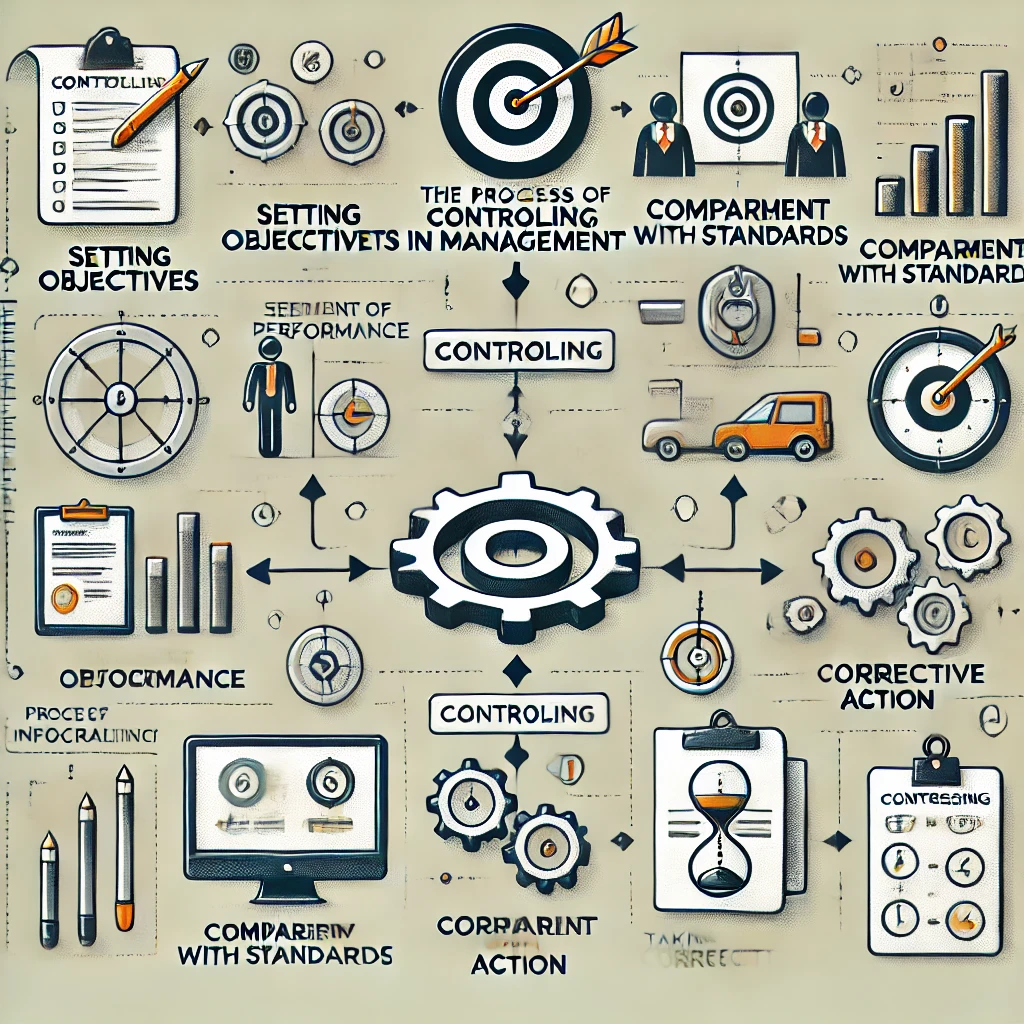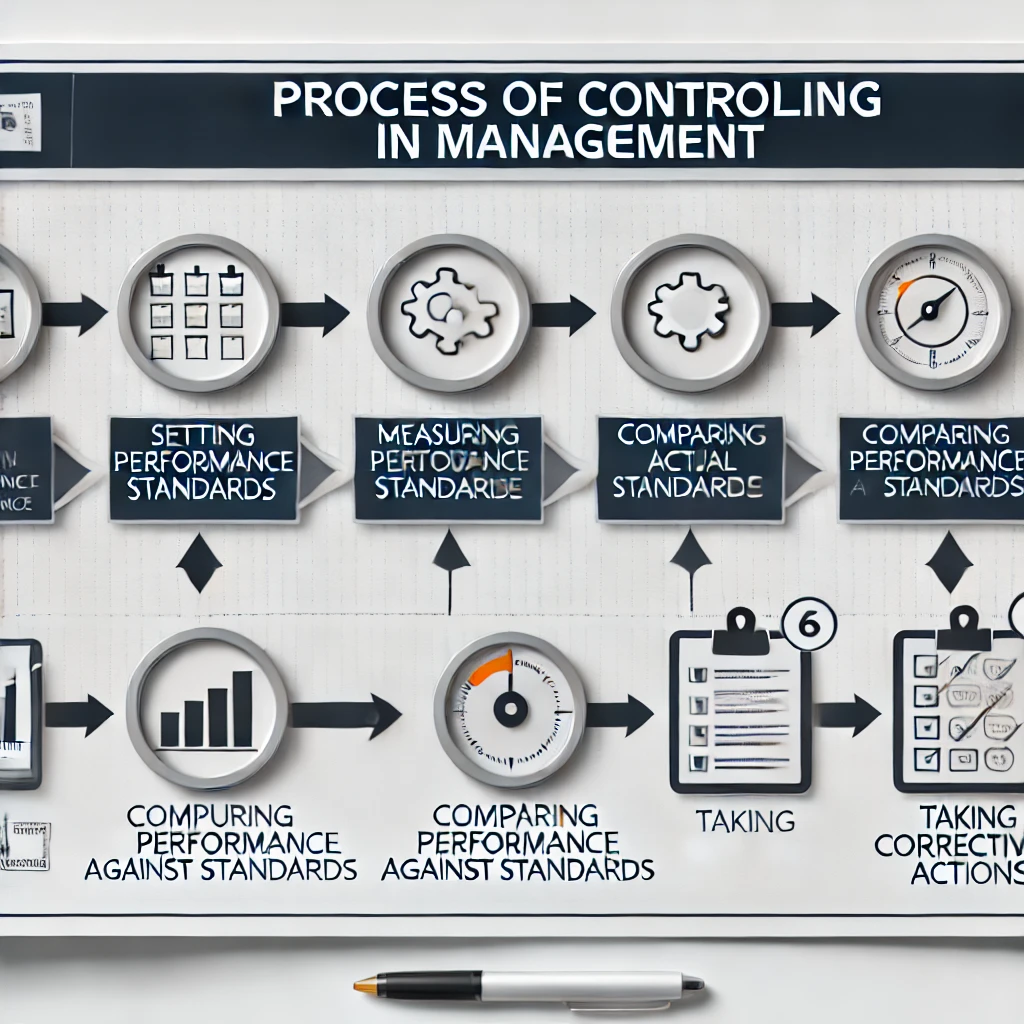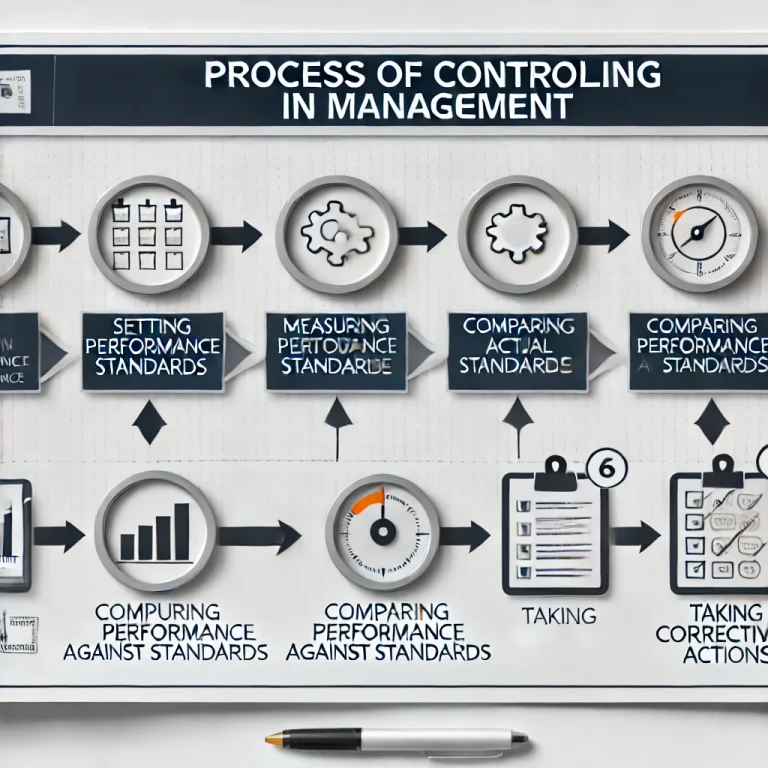The process of control in management is an important function that ensures organizational goals are efficiently achieved. It is primarily related to observing activities, measuring performances, comparing them with the standards created, and taking appropriate actions to achieve desirable goals. In this regard, by adopting a systematic process, managers can remain on course by keeping the organization toward desired targets while continuing to allow for changes in the business environment. Knowing this process and all its stages and importance is the key to good management.
Definition of Controlling in Management Process
Controlling in management means a systematic effort to establish performance standards, to measure actual performance against these standards, to establish any deviations from norms, and to take corrective actions to ensure the attainment of organizational objectives. Controlling serves as a guide to the manager’s decision-making process by giving feedback on how well the company is progressing toward its goals.
Explanation
Controlling is an integral part of the total management process because it directly determines the effectiveness of other functions of management such as planning, organizing, and leading. Without control mechanisms in place, one could hardly know what to improve or the point at which to take corrective action before small issues turn into big ones.

Importance of Controlling in Management Process
Controlling in management is extremely important as it gives managers the different tools necessary to follow through on their work, discover inefficiencies, and, based on that, make decisions. It helps organizations maintain standards of operation and ensures that everything else is being used properly.
Key Aspects of Importance
- Ensures Goal Achievement: The controlling process brings real-life performance in line with organizational goals and achieves the set targets.
- Reduces Errors: Error identification happens very early through controlling, and errors get corrected at the right time, thus reducing them.
- Facilitates Strategic Decisions: It provides the necessary information that guides strategic decision-making and future planning.
- Improves Efficiency: It identifies areas where there is inefficiency and thus suggests how to increase productivity along with a reduction in costs.
Characteristics of Control Process in Management
Control in management is the process, characterized by several features unique to itself in the organizational framework. Knowledge of these features will enable one to better understand exactly how control mechanisms may best be utilized to an advantage in the business environment.
- Continuous Process: It is a continuing process of organization and changes with the level of the firm and fluctuations.
- Pervasive Function: It is an activity that is universal in nature and takes place at all levels of management and with all departments.
- Dynamic Process: Since the organization is expanding and the environment of the business is changing, the controlling process should change accordingly.
- Forward-looking: It is more about action for the future and improvement, although it checks past performance.
- Interdependent with Planning: The controlling process is interdependent with the planning process as it assesses performance based on predetermined standards.

Steps of Controlling Process in Management
The stages of controlling in management are systematic and sequential. These have thus formed the central pillar of good practicing managers, ensuring the achievement of organizational objectives at every stage.
Step 1: Establishing Performance Standards
The frame of a control process is creating clear, specific, and measurable standards. Such standards become benchmarks against which actual performance is to be compared; hence, the standards must be realistic and achievable, in line with organizational objectives, and time-bound.
Examples of Standards:
- Sales targets
- Production efficiency ratios
- Budgetary limits
Step 2: Measuring Actual Performance
Once the standard is set, one has to measure through various metrics and tools. It is indeed true that data collection forms a necessary impact on the evaluation process.
Methods of Measuring Performance:
- Observational assessments
- Statistical reports
- Performance appraisals
Step 3: Comparing Performance Against Standards
This is a step of comparison of actual performance with the already set standards to know if there are deviations. Variances are supposed to be analyzed to whether they fall within the approved limits or whether some corrective actions are needed.
Analysis Techniques:
- Variance analysis
- Benchmarking
- Gap analysis
Step 4: Analyzing Deviations
If the deviation from standards is unusually high, a critical review is done to establish the cause of such variation. These steps identify the areas that need special attention.
Types of Deviations:
- Minor deviations that require minimal adjustments
- Major deviations that necessitate significant changes in processes
Step 5: Taking Corrective Action
The last step of the controlling process is to take corrective or corrective action if deviations have taken place. These are such actions that bring the performance back in line with the standards or modify the standards if they are unrealistic.
Corrective Actions:
- Process adjustments
- Resource reallocation
- Training and development programs
Conclusion
Controlling as a management function ensures that the activities of an organization are directed in the right way toward the attainment of its set objectives. It is a systematic process through which standards are set, performance is evaluated, deviations are analyzed, and corrective action is then taken. This not only sustains efficiency but also aids in better decision-making and resource usage. Integration of controlling into daily management practices leads to increased flexibility in responding to changes and thus to long-term success.
Process of Controlling in Management FAQs
What is the process of controlling in management?
The process of controlling in management involves setting standards, measuring actual performance, comparing it with standards, analyzing deviations, and taking corrective actions.
Why is controlling important in the management process?
Controlling is important because it ensures that all organizational activities are aligned with the set goals, helps in error detection, and improves efficiency by identifying areas that need improvement.
What are the main characteristics of the control process in management?
The main characteristics include being a continuous process, pervasive across all levels, dynamic, forward-looking, and closely linked to the planning function.
What are the steps involved in the controlling process in management?
The steps include establishing performance standards, measuring actual performance, comparing performance against standards, analyzing deviations, and taking corrective actions.
How does the controlling process help in decision-making?
The controlling process provides essential data and feedback on performance, which aids in making informed decisions and strategic planning.


